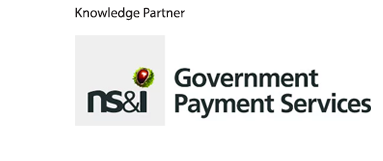Relive all the sessions from Public Service Data Live 2024

Bringing together public service leaders, Public Service Data Live explored how public servants from all relevant disciplines and roles can improve how data is used across government.
You can watch the sessions from the conference, held on 19 September in London, on demand on the Public Service Data Live website.
Roundtables at PSDL explore how to make better use of data and AI
The conference also hosted a series of roundtables on data and artificial intelligence topics. Below are summaries of each roundtable, which were hosted under the Chatham House Rule, so the contributions from public servants can be reported, but not their names, to allow attendees to speak freely.
Getting government data ready for AI
How leaders can help drive effective AI deployment in government
How the UK government can build data skills across the civil service
Harnessing AI to get the best out of civil servants
Getting government data ready for AI

During one roundtable, senior civil servants discussed the potential of AI in their organisations – and specifically whether their data is ready to ensure they can capitalise on these opportunities.
Delegates highlighted potential use cases – from summarising complex documents and information and personalising communications, to supporting planning activities and assessing risk profiles and threats.
However, in terms of data readiness, most participants rated their organisation at between one and four out of ten, while noting that certain isolated projects or teams would score more highly.
The main challenge highlighted was silos of data residing in different parts of organisations and across government, making integration difficult. There is also significant uncertainty around where data resides, who owns it, and how to share it appropriately.
Others highlighted obstacles around legacy infrastructure not being capable of supporting new AI technologies, as well as lack of standardised approaches leading to duplication of effort and cost.
Participants also acknowledged the growing need for data that is of high quality, complete and in a format suitable for AI applications. They noted the importance of building trust in AI systems and ensuring transparent use of people’s data.
The discussion also pinpointed a need to overcome cultural resistance to change and experimenting with new technologies. This could be eased by addressing another key issue identified: the need to develop AI skills and “literacy” among teams to support adoption and good governance.
Finally, participants described the challenge of navigating regulations around data sharing and use, especially across departmental borders.
Data consent and sharing
A key point made in the discussion, which was supported by knowledge partner Hewlett Packard Enterprise, was that the public often assumes data is already being shared more widely across government than it actually is. However, it was acknowledged that in reality data sharing is much more limited due to institutional barriers, risk aversion and policies that don’t align with new analytical uses.
The discussion looked at how – with proper safeguards and transparency – data sharing could potentially be expanded to better meet expectations, power joined-up services and address challenges that cross departmental boundaries.
The delegates saw potential in opt-in data models with strong protections and oversight that facilitate large-scale data sharing and insights. The UK Biobank was discussed as a possible model to learn from, as well as the Administrative Data Research programme. The latter links together data held by different parts of government and facilitates safe and secure access to de-identified data for accredited researchers, with the goal of informing better policy decisions.
Data or use case first?
The session sparked an interesting debate around whether organisations should take a “data-first” or “use case-first” approach to AI.
Those arguing for a data-first approach emphasised that without the right quality data in place, use cases cannot be successfully implemented. However, others countered that defining specific use cases can help ignite interest and get buy-in by demonstrating practical applications to different parts of the organisation. Use cases may also help identify critical data needs.
Most delegates ultimately agreed that the best approach involves an iterative process where use cases and data strategies inform each other.
Use cases can help socialise AI, while a data-first approach ensures initiatives are sustainable and scalable in the long run.
The question framing the discussion was: ‘how ready is your organisation’s data for AI?’ but one delegate turned this on its head, expecting more from the tech in future.
“I’d ask the question the other way around,” they said. “I’d ask how ready is AI for our data? I thought one of the great things around AI is it will deal with unstructured and unprocessed data much faster?”
The ‘How ready is your organisation’s data for AI?’ roundtable, supported by knowledge partner Hewlett Packard Enterprise (HPE), was held at Global Government Forum’s Public Service Data Live event on 19 September.
How leaders can help drive effective AI deployment in government

Many governments around the world are examining how – and where – they can deploy artificial intelligence to make the most of technological developments. But deploying technology in government needs strong leadership to succeed.
In a roundtable session supported by knowledge partner Capgemini, public servants from across the UK government came together to discuss how government can provide the leadership needed to deploy artificial intelligence.
The session was entitled ‘Do government departments need a chief AI officer?’ and in the session, many of those at the roundtable answered ‘no’ to this question.
As one speaker put it, this is because the opportunity from AI is too broad – as indeed is the risk – for the responsibility to be owned by one person in an organisation.
However, many speakers spoke about the vital role of leadership overall in helping government to deploy AI technologies.
Leaders ‘need to give people space to explore AI’
One attendee highlighted that, rather than thinking about senior leadership roles, the key was “to think about where AI sits in the organisation”.
The roundtable therefore heard from attendees both on how they are using AI in their own operations, as well as how leaders can help drive AI adoption across government and the wider public sector.
Many of those attendees raised the importance of learning the lessons from how organisational leaders can support the implementation of innovative new approaches in government in order to make the most of AI.
Chief among these is leaders giving officials the “space to explore”.
One civil servant said that while it was important to have a business problem you are trying to solve, there is value to experimenting with new approaches without the “pressure to deliver a light bulb moment – where we all know you don’t always find them”.
Smaller experiments can have a bigger organisational impact, and another speaker highlighted that the leader’s job in an organisation is to “cultivate psychological safety” so people feel enabled to take risks.
However, they acknowledged that giving people permission to be able to try new ideas and ways to deploy artificial intelligence “was an incredibly difficult thing to do – even more so in government than the private sector, given the need to be stewards of public money”.
Leaders must therefore “provide air cover” for experimentation in AI, while other public servants are working on the ground.
“You have to, by your actions, and by the way you set things up, make it so that there’s an environment which means that they do feel like they can play and show that we’ve tried – and maybe even failed a little bit.”
This leader spoke about how their organisation was looking to use AI in use cases around public health early intervention and prevention. Organisational leaders had practised this “air cover” approach by building a team of behavioural and data scientists and service designers, “giving them a couple of outcomes that we’re looking to create” and allowing them to look at how they can deploy resources and technology to measure them.
“I think the job of leadership is making people understand the outcomes that you’re trying to achieve.”
How leaders can reassure civil servants about their jobs in the world of AI
The conversation also touched on another issue that leaders are tackling when it comes to deploying AI – reassuring people about the future of their jobs.
“We need a proper, clear narrative to explain to people whether their jobs are no longer needed in the future,” one attendee said. “In many cases, people feel threatened, and they feel job insecurity… That’s where we need a consistent, clear message.”
This leader said that there is therefore a need to reassure people that “we’re going to cross train you and teach you to do other things [and] the other eventuality is that it’ll allow you to do the higher value work. I think that’s going to be a big challenge for us – and so what’s the leadership answer to that?”
Another attendee agreed some people are “genuinely worried” about their jobs being taken away.
“The messaging that we have is really important,” they said. “I think it’s about that parts of your job will disappear, but probably the bits that you find really boring and dull. Your job will change, but it will be, hopefully more interesting, and you’ll get more out of it.”
And this goes to the closing points made at the session: leaders have to be able to use AI to help broaden technological deployment across government.
As one speaker concluded, AI provides a catalyst to “look at existing ways of working and thinking”.
“Rather than tacking on digital technology and data, how can we re-engineer some of these interactions into something that is leveraging all these big tidal waves of [technological developments] like AI – and then things like quantum computing,” they said.
“There’s more stuff coming, and when they start intersecting with each other, there’s going to be some really big opportunities.”
The ‘Do government departments need a chief AI officer?’ roundtable, supported by Capgemini, was held at Global Government Forum’s Public Service Data Live event on 19 September.
How the UK government can build data skills across the civil service

Boosting the skills of civil servants to make better use of data is a long-standing aim of government – and the importance of achieving it is growing, as it plays a vital role in deploying artificial intelligence and wider digital transformation.
Civil servants need an understanding of data to take advantage of these opportunities – and in a roundtable session supported by knowledge partner esynergy, public servants from across the UK government came together to discuss how the civil service can build data capacity at scale.
Currently, as one attendee put it, data is being collected in government departments without a full value chain to maximise its use.
The discussion touched on the systems in government – and the skills for civil servants – that are needed to make the most of data.
How government can think about data holistically
A number of attendees in this discussion said there is no organisation in government that yet understands all their data holistically.
“I’ve yet to come across an organisation that at organisational level understands all its data,” one speaker said. “Each data or business owner knows roughly what data they have, but do they know, holistically, what they have at a business level? No.”
This roundtable discussion then touched on how to improve this situation.
One contributor said that it was important to understand what users want from their data. This would allow civil service training to be focused on agreed priorities – a point that was echoed by another speaker, who said a “broader data literacy and understanding of what is data – and what the value is” was needed.
However, some other speakers also discussed the obstacles to improved data management in government.
Among the barriers is a need for what one official called foundational data literacy among government officials.
One official highlighted that when they worked in a previous job collecting data as part of plans to improve the 75 most used services in government, there was no standard definitions of things like ‘what counts as a transaction in these services’.
This speaker recalls that those involved in delivering these services thought that was a data question, which should be for data people to define. “But what we worked with them on was: ‘you’re the service owner: you know your service, and you should say this is what a transaction is’.”
‘Data should be owned by everyone’
The lesson from this experience was that “data should be owned by everybody, not just by people in the data professions”, this speaker added, but “there’s a lot of fear” from civil servants in different teams to take this responsibility. “As soon as someone says data, people go: ‘oh, that’s not me’.”
This fear can be overcome if civil servants are brought together to devise the best data standards and definitions.
Data “should be shared and owned collectively, not down to just one individual,” this official concluded, while another added the key was “getting people to understand how data can be useful to them, and making it easy for them to find”. People can then start exploring and finding things for themselves once “you help them understand” the value of the data in their organisation.
Other officials spoke about how else to boost this understanding, with suggestions including how to integrate data into organisational culture.
One speaker said they had held a series of cross-departmental workshops to identify the key organisational metrics and bring together data. “I’ve found them to be successful as it has got people into [understanding] their data – and they can actually see why we would measure that,” they said.
Another attendee said the best way to support data-driven decision-making would be to better embed data insights into people’s workflows, so it is readily available when decisions are made. “It’s a lot of work to increase the data and literacy of a whole organisation, but actually, if you could lower the bar for someone [to access it when they need it], you can get the same effect, but maybe for much lower investment.”
Overall, attendees said there was a need for a cultural shift, greater collaboration and – to return to the point raised at the start – a better understanding of all the data in a department or agency, so it can be used to measure outcomes and provide actionable insights for decision-makers.
One speaker’s closing comments touched on the importance of events such as Public Service Data Live in providing that collaboration and bringing together civil servants through roundtables like this one.
“I’d really recommend networking, chatting, and linking up, because there is very rarely a novel and new problem,” they said. “There is always someone around that’s got the answer to the problem you’ve got, and the more people you can network with, the more chance you’ve got finding the person that’s got the answer to your particular problem.”
The ‘How to build a data-capable civil service at scale’ roundtable, supported by esynergy, was held at Global Government Forum’s Public Service Data Live event on 19 September.
Harnessing AI to get the best out of civil servants

Another roundtable at Public Service Data Live examined how AI could free up civil servants’ time for more engaging work.
The session covered three main areas: the potential for AI to reduce repetitive tasks; the integration and use of AI in frontline public services; and addressing concerns around the use of AI – and more specifically the need for heads of departments to reassure civil servants that AI would primarily be deployed to make their jobs easier and more effective.
Many delegates felt there were legitimate reasons to both welcome and be wary of AI. Participants were reminded of research by the Alan Turing Institute, which found that AI could help automate around 84% of repetitive transactions across 200 government services. The UK government’s Redbox tool, for example, shows just how AI can be harnessed to provide quick summaries of policy documents, a job which when done by a person can take considerably longer.
Ending repetition, kickstarting productivity
One participant said they were seeing “measurable benefits” from using AI, particularly to help software developers write programmes faster. When writing code, the AI can tell a developer if what they’re writing has already been written – reducing repetition by prompting reuse and speeding up technological development.
Another, more experimental use of AI was to provide a transcript and summary of a team’s user testing. The results were shown to have saved around 40% FTE, (or full-time equivalent, a unit of measurement representing the workload of an employee).
One participant then countered that while anecdotal evidence from specific departments gave reasons for optimism, there were as yet few “robust methods of measuring the impact” that can then be scaled.
Rather than seeking data built on surveys, this participant’s team is working on a different approach based on the principles of behavioural science. In this scenario, two groups of civil servants – one with access to an AI tool and one without – are asked to record the time it takes them to complete tasks on a timesheet.
They rounded off their point by saying that, until such controlled comparative exercises become more normalised, departments won’t be able to say for certain how or whether AI is freeing up civil servants to do their best work.
Managing the fear
Delegates broadly agreed that AI is proving capable of returning quality time to civil servants – but government should seek to put employees at the centre of AI, rather than technology itself, to allay any fears. This not only concerns job security, but upskilling too. Some participants said they weren’t yet sure they had the skills needed to interact with AI, and that this made them anxious about whether they would be able to hit the ground running when new systems were introduced.
Even the idea that AI might one day eliminate low-intensity work altogether is controversial, since studies show that complex problem-solving can only be done for a limited period of time per day. Without a modicum of administrative work, officials would find themselves stuck with only the most complex intellectual tasks to solve.
Others said that the balance of accountabilities around AI remain vague. When autonomous systems make mistakes, there is nothing to say a person might not still be blamed.
But not wishing to dwell on the inhibitive effects of fear, one participant said finally: “Fear is always the first emotion to arrive with something like this. We’ve seen it before in history: cotton looms in 1820s Manchester, computers in the 1960s. This has happened before. I just think we now need to bring everybody up to date.”
The ‘Harnessing AI to get the best out of civil servants ‘ roundtable, supported by SAP, was held at Global Government Forum’s Public Service Data Live event on 19 September.




















